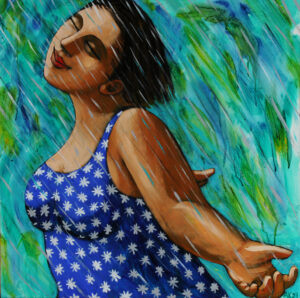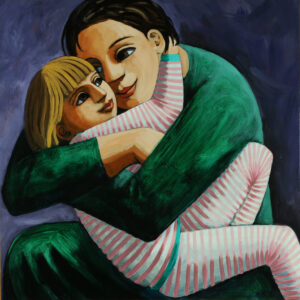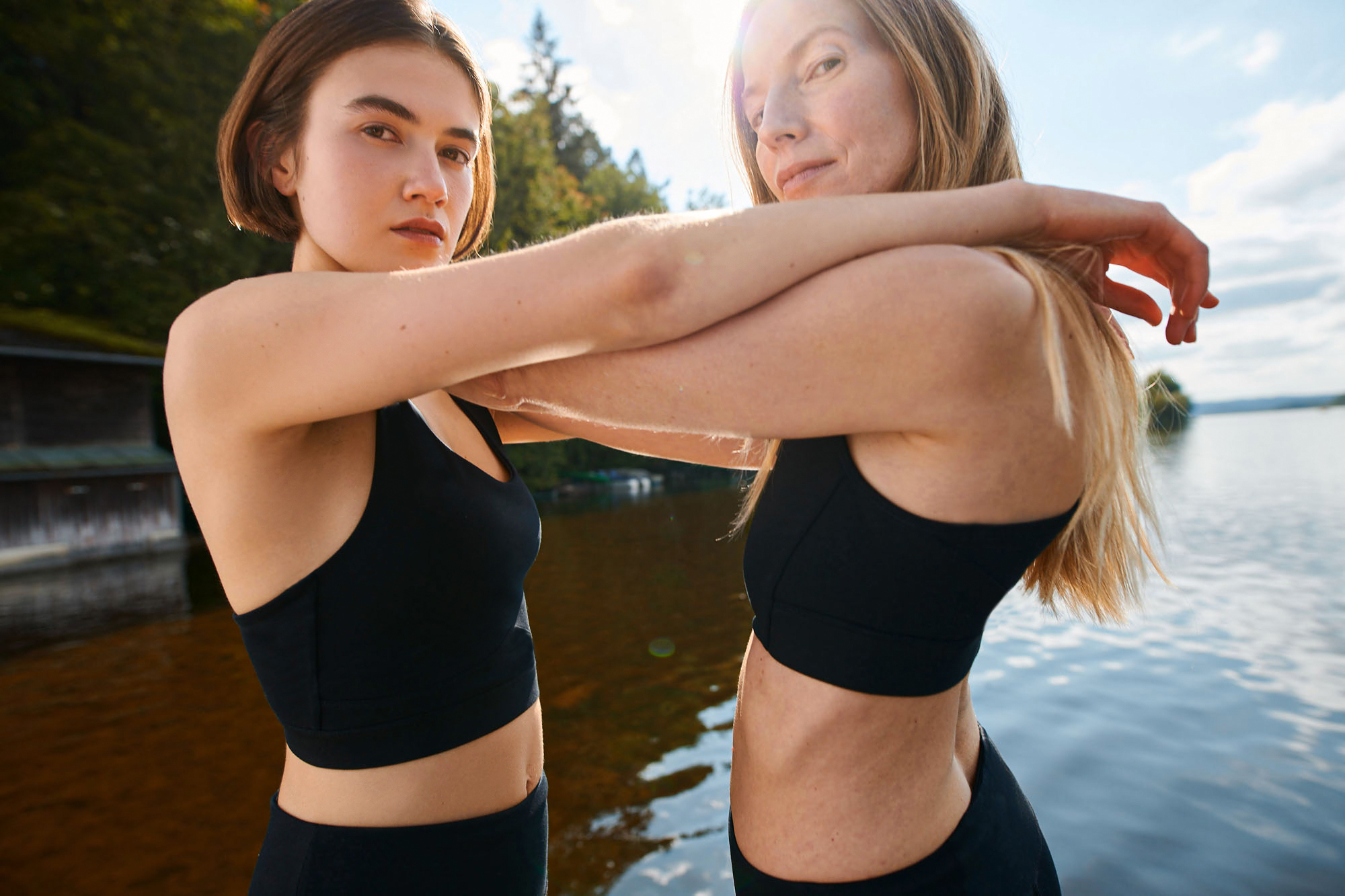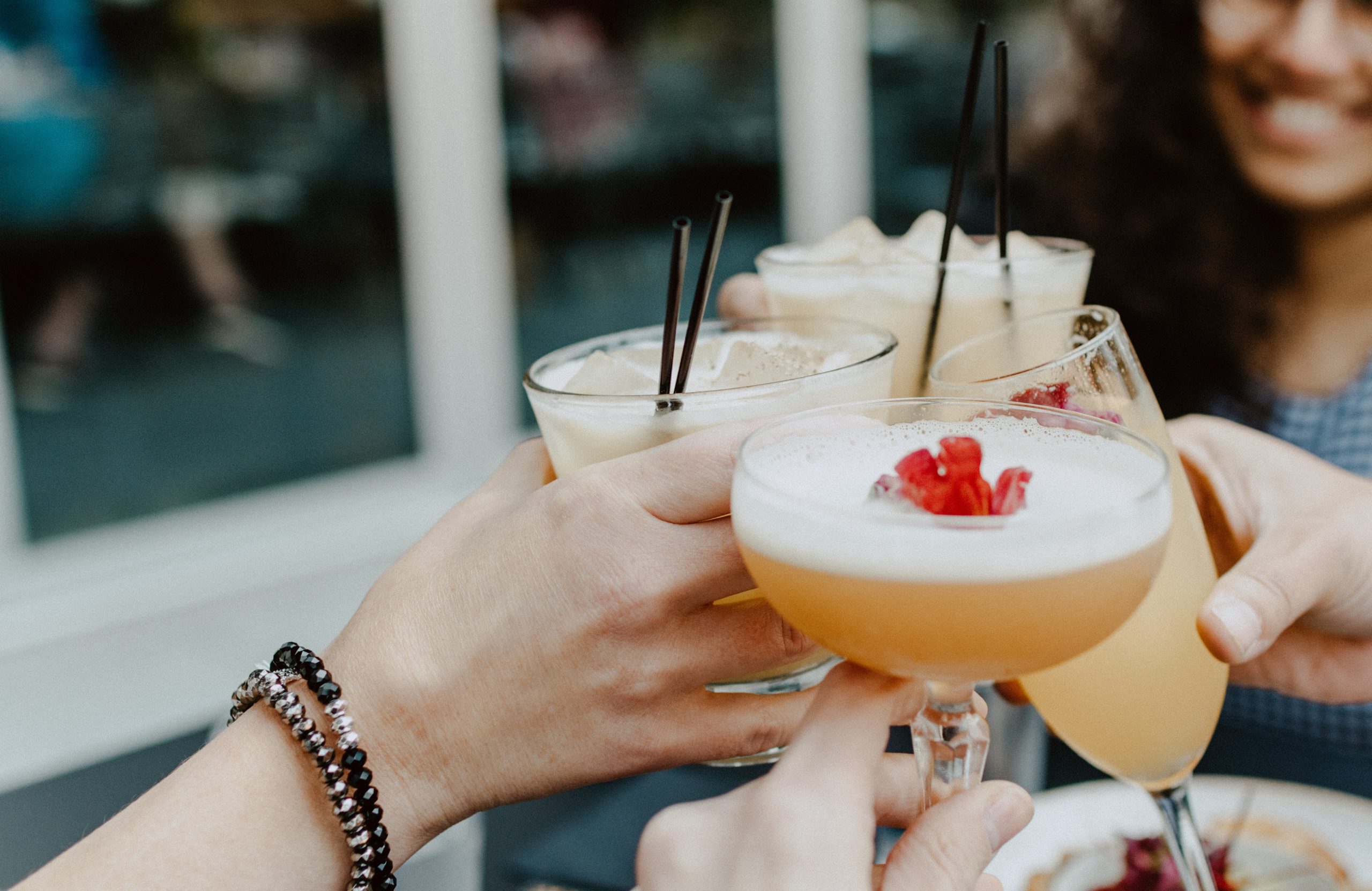Acclaimed painter and printmaker Anita Klein creates iconic, heartfelt images that are personal yet universal, intimate without being sentimental. We caught up with her to find out about her latest inspiration and life as an artist during Covid.
Hi Anita. How are you? Where are you? Can you talk us through your typical day ‘at work’?
Anita Klein: My studio is in Bermondsey, near London Bridge, about 5 minutes’ walk from home. I look after my grandchildren two days a week but on all other days, I walk to work. At the weekends my day begins with a swim at Royal Victoria Dock.
I spend most of my time in London making prints, linocuts, and etchings. I cut the lino and metal and experiment with printing colours, layers, and so on. When I am satisfied with an image I make “stage proofs” – which are prints at every stage of the process so that my assistant, who comes one day a week, can follow my instructions and print the limited edition on my block-printing press. It takes about a week for each layer of oil-based ink to dry before the next layer can be printed, so I generally have a few images on the go at once.
The women you paint are sensual and have an almost mythic, goddess-like energy to them. What is it about the female form and feminine energy/essence that interests you?
Anita Klein: It’s not so much that I am “interested” in the female form, it’s just that I inhabit one! I try to paint what things feel like rather than what they look like. I don’t use mirrors, models, or photographs in my work, so I use what it feels like to be inside my body to express the physical feeling of moments I want to celebrate. The smaller and more seemingly insignificant a moment is, the more monumental I want the picture to be, as a kind of glorification of the ordinary.
Your artworks have a calming, meditative quality. Do you practice meditation or mindfulness – or a similar practice?
Anita Klein: Not consciously, although I find swimming a kind of meditative experience.
Part of the reason the pictures feel calming is, I think, because I work very hard on the composition (design) to make it balanced. When I start a drawing I roughly sketch a feeling. Then I adjust and change every line until the shapes fit together and flow around the canvas in a satisfying and abstract way, leading the eye towards the focus of the picture.
I’m more concerned with this abstract balance of shapes than anatomical correctness, so I don’t mind if one leg is longer than the other for example, as long as the shapes in the picture are in harmony.
It’s hard to explain what I’m aiming for, but I know when I’ve achieved it. It’s like when you put the last piece in a jigsaw puzzle and suddenly everything goes quiet and still. I think it is partly that balance and stillness that people respond to as a calmness.
You speak about the importance to you of family, intimate relations, and the everyday moments that can easily pass us by. Have you always had an eye for seeing the magic in the mundane? Where does that come from?
Anita Klein: I have always felt acutely aware of the fragility of happiness and have never taken my ordinary domestic life for granted. My childhood was disrupted by my parents’ divorce and moving continents. Also, my father’s family were Jewish refugees (to Australia) from Eastern Europe, so I feel I always knew that ordinary family life was a privilege. I suppose that makes me very grateful and want to hold onto and celebrate those small things that I would most miss if snatched away from me.
How has the Covid pandemic affected your view of the world and relationships and in what ways has it impacted your artistic work?
Anita Klein: Before the pandemic, I spent one week a month alone painting in my studio in Italy. This became a kind of routine retreat over the past 15 years, allowing me time to play and experiment with ideas away from the business side of what I do, and away from the pressures of London life. Since the beginning of the pandemic, I have obviously not been able to do this and so I have been alternating between painting and printmaking in my London studio.
Mainly I’ve felt that the rest of the world has come around to my way of thinking! That people, family, and friends are the most important things for happiness. I missed my grown-up children and grandchildren desperately during the lockdown. I read to my grandchildren on Zoom every day, but it broke my heart not to be able to hug them. I began to paint what I was missing: family gatherings, cuddles, and so on. Not a big change from my usual themes, it’s just that it changed to what I actually was missing.
In terms of selling, I was very anxious at first and worried about how we would manage if my income from sales of my work dried up. In fact though, in common with other artists I’ve spoken to, sales continued, possibly even better than usual. I think people had more time to browse my website and Instagram. My gallery, Eames Fine Art, worked very hard for me throughout the pandemic.
You were taught at the Slade by the figurative artist Paula Rego. Melanie saw her show at Tate Britain this summer and was blown away! How did she influence you and what was it like to be taught by her?
Anita Klein:
I was incredibly lucky to be taught by Paula (Rego) at the Slade. She noticed my tentative sketches of family life when I was first experimenting with autobiographical work and she was so encouraging and supportive. I visited her studio and we regularly talked for hours about how to paint if you are essentially a ‘drawer’. We experimented with printmaking at the same time in the printmaking department at the Slade, and when I had three small paintings in a group exhibition at a library, she came to the evening opening with a big bunch of flowers for me. It was a time when I was feeling very nervous and unsure, so her support made a huge difference.

There seems to be a resurgence of interest in female artists, with galleries having more solo shows and retrospectives. To what extent do you feel there is a shift going on? Are we still a long way off from women getting the recognition they deserve?
Anita Klein: I hope so. We have a long way to go to redress the balance. However, it’s not just that there should be more women represented by galleries and museums, it’s that typically masculine subject matter and style are vastly more respected than more typically feminine work. I was often advised by male tutors at college to use a bigger brush, not to work carefully and quietly. And of course, my subject matter, motherhood, and children particularly have always been unfashionable. Quite often, if women’s art is recognised it is because it competes on male terms. Female voices can be ignored or despised for being weak or irrelevant. This is changing, but slowly.
If you go to the Bethnal Green Museum of Childhood you can see so many stunningly creative and beautiful objects that were never respected or labelled art because they were made by women, often for children, and were played with and loved. While equivalent objects made by men have been revered and collected as sculptures.
However, I am wary of fashion. My work has been unfashionable throughout my career. In the 1980s when I was at art college, fashion was for performance and grainy videos, or large abstract expressionist paintings. From the ‘90s onwards fashion was for art about ideas (conceptual art) and art that shocks and outrages. I have never been interested in any of that.
An honest artist can only do what they are personally driven to do, regardless of fashion, and I comfort myself that what is fashionable will also go out of fashion. I am hoping that my work has a longer appeal and that it will speak to my grandchildren and great-grandchildren about feelings that all humans share.
@anitakleinart









